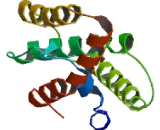Blog Post
Unraveling the Role of Interleukin 26 in Immune Regulation
Introduction: Interleukin 26 (IL-26) is a lesser-known cytokine that plays a significant role in immune regulation and inflammatory responses. In this blog post, we will delve into the fascinating properties of IL-26, its interactions with immune cells, and its potential implications in various health conditions. Join us as we explore the intricate world of IL-26 and its impact on immunology.
Understanding IL-26: IL-26 belongs to the IL-10 cytokine family and is primarily produced by activated T cells, particularly T helper 17 (Th17) cells. It exerts its effects on various immune cells, including monocytes, dendritic cells, and epithelial cells. IL-26 is involved in modulating inflammation, antimicrobial defense, and tissue repair processes. Its dynamic functions make it a key player in the immune system’s response to pathogens and tissue damage.
Immune Interactions: IL-26 acts as a dual-edged sword in immune responses. On one hand, it promotes the production of pro-inflammatory cytokines such as IL-6 and IL-8, contributing to the recruitment and activation of immune cells during infection and inflammation. On the other hand, IL-26 exhibits antimicrobial properties by directly targeting and disrupting microbial membranes, enhancing host defense mechanisms against pathogens.
Role in Health and Disease: The role of IL-26 in health and disease is multifaceted. In infectious diseases, IL-26’s antimicrobial actions help combat bacterial and viral invaders, playing a crucial role in innate immunity. However, dysregulated IL-26 expression has been implicated in autoimmune disorders and chronic inflammatory conditions. Understanding the delicate balance of IL-26 signaling is essential for deciphering its implications in disease pathogenesis.
Therapeutic Potential: The unique properties of IL-26 make it a promising target for therapeutic interventions. Researchers are exploring strategies to modulate IL-26 activity for managing inflammatory disorders, autoimmune diseases, and infectious conditions. By targeting IL-26 pathways, novel therapies aim to restore immune balance, alleviate inflammation, and improve clinical outcomes for patients with immune-related ailments.
Future Directions: Ongoing research endeavors are focused on unraveling the intricate mechanisms of IL-26 signaling and its crosstalk with other immune mediators. Collaborative efforts between immunologists, clinicians, and pharmaceutical developers are essential for translating IL-26 discoveries into innovative therapies. Stay updated on the latest advancements in IL-26 research and its potential impact on immune modulation and disease management.
Conclusion: Interleukin 26 (IL-26) emerges as a versatile cytokine with diverse roles in immune regulation, antimicrobial defense, and inflammatory responses. By unraveling the complexities of IL-26 biology, researchers aim to harness its therapeutic potential for addressing a wide range of health conditions. Stay informed about the evolving landscape of IL-26 research and its implications for immune health and disease management.


